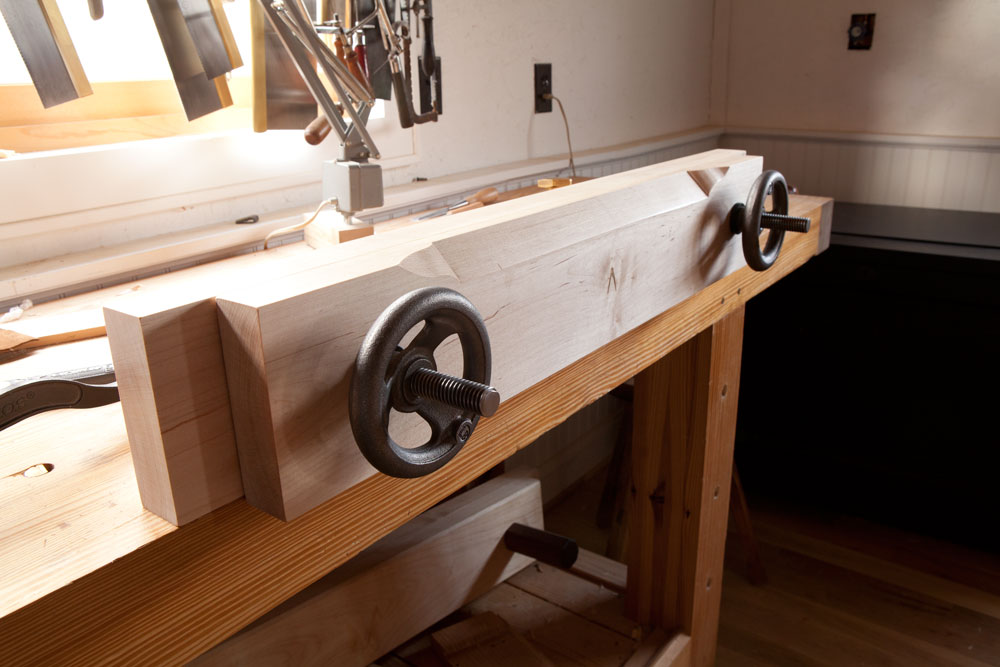
Where is the best place to mount a vise?
0:075:05BENCH VISE - How To Install A Vise - YouTubeYouTubeStart of suggested clipEnd of suggested clipThe side of the bench.MoreThe side of the bench.
Where do you place woodworking vise?
3:194:38How to install a Woodworking Vise// Woodworking// Quick Release ViseYouTubeStart of suggested clipEnd of suggested clipOnce everything looks good then it's just time to apply your favorite finish to your front jaw ofMoreOnce everything looks good then it's just time to apply your favorite finish to your front jaw of the vise. And I chose the amount of this place where the inner jaw is the actual side of my workbench.
Why mount the vise at the edge of the workbench?
Mount a vise so that the stationary jaw projects slightly beyond the edge of the workbench. This allows long work to be clamped in the vise without interference from the edge of the workbench. Ensure that the workbench is firmly secured to its base.
What clamping position should be considered when mounting a vise on a workbench?
What clamping position should be considered when mounting a vise on a workbench? The vise should be positioned so that a long piece can be held vertically in the jaws without interference from the workbench.
What is normal workbench height?
34″ – 36″34″ – 36″ (86cm – 91cm) tend to be the most common workbench height for woodworking. A height in between these two extremes tends to be the most popular, particular if you do a range of activities at your workbench.
Do I need a vise on my workbench?
A workbench is only a success if it can keep itself still and provide means to hold your work. A woodworking vice is not an essential feature of this. Typically though we can expect to see two vices on a workbench today. One will be installed on the front of the bench, towards the left.
Is a tail vise necessary?
The main reason why a traditional tail vise is so darn useful is because of the unobstructed gap you get in the front of your bench. this gives you the perfect way to solidly clamp chair legs, or any long part that needs to be held while you work on it from one end.
When not in use a bench vise should be left with?
46. Bench vises not in use should be left loose with the handle in a vertical orientation. This will prevent injury to those walking past the workbench.
How do you put a vice on a table?
2:2511:30How To Install A Vise Like A PRO - YouTubeYouTubeStart of suggested clipEnd of suggested clipMake sure you have enough room to get that nut on there without it conflicting. Also reach upMoreMake sure you have enough room to get that nut on there without it conflicting. Also reach up underneath there on the bottom side as well if you can only get three bolts in it that's okay.
Do I need a vise on my workbench?
A workbench is only a success if it can keep itself still and provide means to hold your work. A woodworking vice is not an essential feature of this. Typically though we can expect to see two vices on a workbench today. One will be installed on the front of the bench, towards the left.
How do you hang a vise without a bench?
2:096:17Mounting a vise without taking up bench space. - YouTubeYouTubeStart of suggested clipEnd of suggested clipSo you just go to the spot that it's at. And the holes are just a little bit loose so that they don'MoreSo you just go to the spot that it's at. And the holes are just a little bit loose so that they don't bind up.